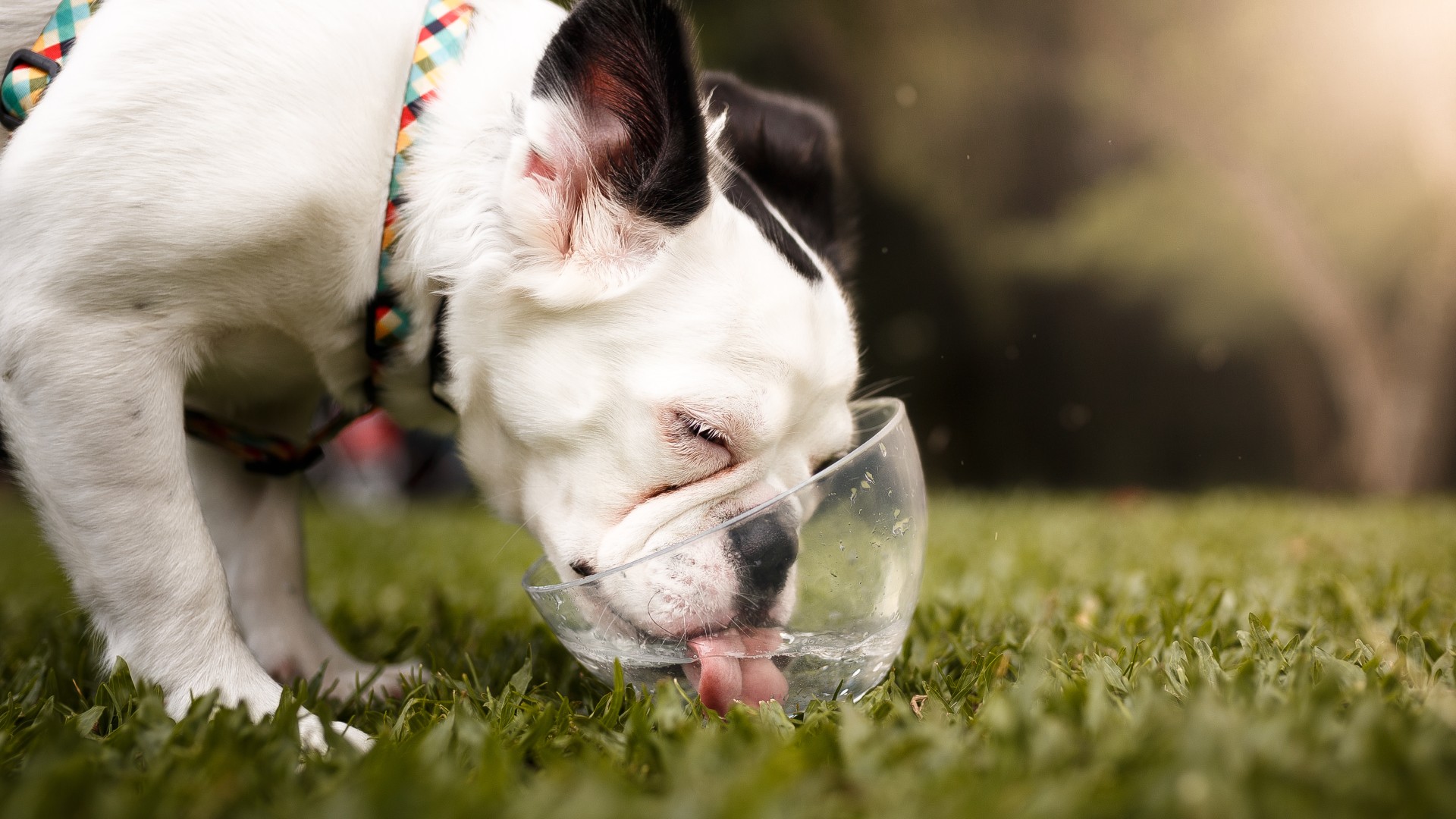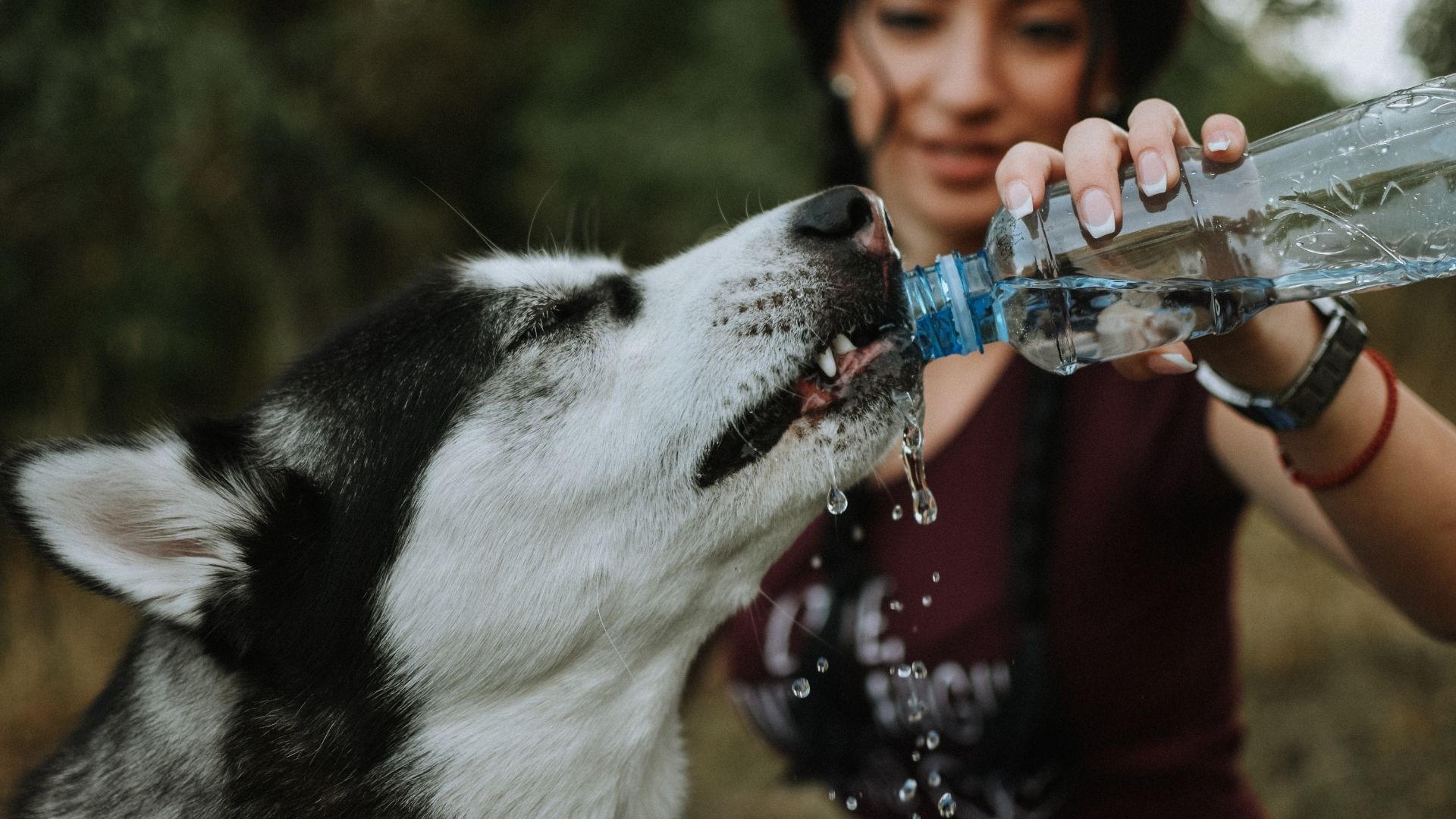Why is my dog not drinking water?
Why is your dog not drinking water? Check out these tips to find out

A dog not drinking water can be a problem: Summer heat is upon us and staying hydrated is important for both humans and dogs. While investing in one of the best pet water fountains is a great way to encourage your pup to drink up, what happens if your dog isn’t drinking enough on his own? How do you prevent your dog from becoming dehydrated? And how do you know if your dog is drinking enough water in the first place?
The question of 'how much water should my dog drink?' is a common one amongst concerned pet parents and the truth is, water intake can vary from dog to dog and from day to day. That being said, there’s a rough estimate that can help you determine whether your dog is getting enough water daily. There are also some tricks you can try to get your dog to drink more if his intake has recently decreased. Read on to learn more about drinking in dogs and when to see a veterinarian about your dog’s decreased water intake.
Why is my dog not drinking water?
It’s not common for dogs to stop drinking water, so if your dog is not drinking, it’s quite likely that something is wrong. Your dog may drink less than usual if he is eating a high moisture diet or if he has recently had fluids administered by your veterinarian either subcutaneously (under the skin) or intravenously. Other reasons your dog may drink less than usual can include nausea, pain, and difficulty reaching the water bowl due to pain or poor mobility. Your dog may also drink less if the water is not clean and fresh. Water that has a bad taste or smell may make your dog drink less than usual.
How much water should a dog drink daily?

A rough estimate of how much water your dog should drink daily is about 60-80 ml per kilogram of body weight, or approximately one ounce of water per pound of body weight. Using this formula, a 50 pound dog would need approximately 50 ounces of water daily, while a 100 pound dog would need approximately 100 ounces of water daily, and so on. However, it is important to note that water intake needs can vary widely depending on a number of factors, such as activity level, ambient temperature, health status, diet, and individual variation.
Although the one ounce per pound of body weight estimate provides a good starting point, it should not be taken as a hard and fast rule for water intake as some dogs may drink more or less than this amount. Monitoring your dog’s water intake over time is the best way to determine whether your dog’s drinking has increased or decreased compared to what is normal for him.
How to measure your dog’s water intake
To find out how much your dog is drinking in a day, you’ll need to carefully measure your dog’s water intake. To do this, use a measuring cup to fill your dog’s water bowl, and record the number of cups you put in. After 24 hours, use the measuring cup to empty the bowl and record the number of cups you take back out. Now, subtract the number of cups that were left at the end of the day from the number of cups you put in at the start of the day. This will tell you how many cups of water your dog consumed over the course of that day. Tracking this number over the course of several days or weeks is a great way to determine whether your dog’s water intake is increasing or decreasing, so you’ll know exactly if or when you need to be concerned about your dog’s drinking habits.
What to do if your dog is not drinking

If your dog is drinking less than usual, first make sure that your water bowl is clean and is filled with clean, fresh water. A dirty water bowl is not very inviting and may discourage your dog from drinking. If your dog has a history of pain or mobility issues, make sure the water bowl is easily accessible. This may mean that you need to bring the bowl to your dog, or provide traction over slippery surfaces to help make the journey to the bowl easier for your dog.
Get the best advice, tips and top tech for your beloved Pets
Some dogs prefer to drink in private, so consider measuring the amount of water in the bowl and returning at a later time after your dog has had an opportunity to relax and drink on his own. Adding water to your dog’s food is another way to increase your dog’s moisture intake if you suspect he hasn’t been drinking well. If your dog is still not drinking, adding a little tuna juice or low sodium chicken broth to the water to flavor it may entice your dog to drink.
When to see a veterinarian
If your dog is drinking less than usual for more than 24 hours, it’s best to see a veterinarian to ensure there is nothing wrong with your pet that may be contributing to the sudden decrease in thirst. Seeing a veterinarian is especially important if the decrease in drinking is accompanied by other symptoms such as vomiting, diarrhea, or a decrease in appetite, as your pet can quickly lose fluids and become dehydrated.
Your veterinarian will perform a full head to tail physical examination, and may recommend some additional diagnostic testing to help get to the bottom of the issue. Your vet may also recommend some supportive care with intravenous or subcutaneous fluids to help rehydrate your dog. Note that after receiving fluids, your dog will likely drink very little at home that day as he has already received a significant portion of his daily fluid intake from the intravenous or subcutaneous fluids.
Monitor your dog’s drinking habits
Monitoring your dog’s drinking behavior over time is the best way to determine whether your dog’s drinking has changed. Water intake can vary significantly from dog to dog or even from day to day depending on several factors. However, if your dog is drinking very little or not at all for more than 24 hours, or if your dog’s decreased drinking is accompanied by other symptoms, it is time for a visit to your veterinarian.
Dr. Elizabeth Racine is a small animal general practice vet covering all things pet health and wellness. Her special interests include veterinary behavior, nutrition, and internal medicine.
As a freelance writer, Dr. Racine has written content for major companies in the industry such as the American Kennel Club, Merck Animal Health, Bayer PetBasics, Elanco, and CareCredit. In her free time, Dr. Racine enjoys playing trampoline dodgeball, hiking with her beagle Dasher, and spending time with her three mischievous cats.

